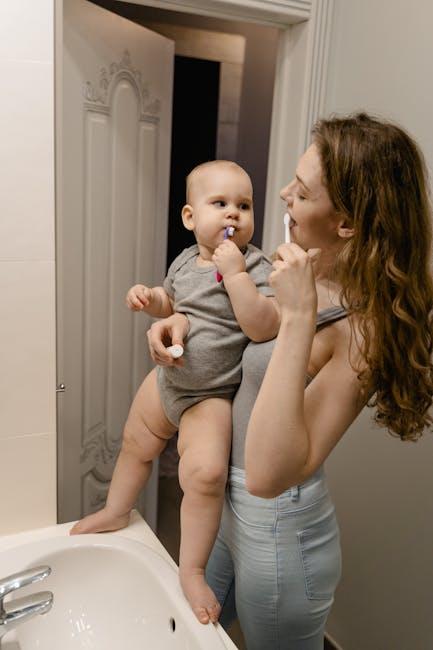Did Your Toddler Break a Tooth? Here’s Exactly What Pediatric Dentists Say to Do Next
When your toddler breaks a tooth, it can be a scary moment for any parent. But don’t panic! Pediatric dentists offer clear advice on what steps to take immediately to care for your child’s broken tooth and ensure their oral health remains on track.
Understanding Why Toddler Tooth Injuries Are Common
Toddlers are explorers and movers — running, climbing, and sometimes falling. Their developing motor skills and natural curiosity make dental injuries quite common during early childhood. According to pediatric dentists, broken baby teeth happen mostly due to accidental falls or impacts during play.
While baby teeth (primary teeth) will eventually be replaced by permanent teeth, caring for these early chompers is critical to avoid infection, maintain speech development, and preserve space for incoming adult teeth.
What To Do Immediately If Your Toddler Breaks a Tooth
Here’s a step-by-step guide recommended by pediatric dentists on the immediate steps you should take if your toddler breaks a tooth:
- Stay Calm and Comfort Your Toddler: Your child may be frightened. Reassure them and try to keep them calm.
- Assess the Injury: Check the mouth for any bleeding, loose teeth, or teeth fragments.
- Rinse Mouth Gently: Use warm water to gently rinse the mouth and clean the area.
- Control Bleeding: If there’s bleeding, apply gentle pressure with a clean cloth or gauze for 10–15 minutes.
- Locate Tooth Fragments: Save any broken pieces of the tooth, if found, in a container with milk or saliva — this may help your dentist in treatment.
- Avoid Touching Roots: If the tooth was completely knocked out, handle it by the crown (top part), not the root.
- Give Pain Relief: If your toddler is in pain, consult your pediatrician or dentist about giving appropriate children’s pain medication like acetaminophen.
- Call Your Pediatric Dentist ASAP: Even if the injury seems minor, professional assessment is essential.
Why It’s Important to See a Pediatric Dentist Right Away
Pediatric dentists specialize in treating young children and understand how to handle broken or injured teeth in toddlers. Visiting your dentist promptly helps:
- Prevent infection and complications
- Determine if a tooth can be restored or must be monitored
- Assess potential injury to underlying permanent teeth buds
- Provide guidance on oral hygiene during healing
- Offer treatment options tailored to toddlers
When to Visit the Emergency Room Instead?
If your toddler experiences any of the following signs, head to the emergency room immediately:
- Severe bleeding that doesn’t stop with pressure
- Signs of a concussion or head injury (vomiting, unconsciousness, extreme drowsiness)
- Broken jaw or bone deformity
- Difficulty breathing or swallowing
Types of Toddler Tooth Breaks and Their Treatments
Dental injuries vary in severity. Here’s a quick overview of common toddler tooth breaks and typical pediatric dental approaches:
| Type of Break | Description | Pediatric Dentist Treatment |
|---|---|---|
| Chipped Tooth | A small part of the tooth enamel is broken off | Smoothing rough edges or bonding with dental resin |
| Cracked Tooth | A visible crack extending through enamel, possibly into dentin | Observation, dental fillings, or protective crowns |
| Fractured Tooth | Larger break involving dentin or pulp exposure | Possible root canal treatment, crown, or extraction |
| Knocked-Out Tooth | Tooth completely dislodged from the socket | Seeking immediate dental care; sometimes reimplantation |
Practical Tips to Prevent Future Tooth Breaks in Toddlers
- Use Age-Appropriate Safety Gear: Helmets and mouthguards during activities like biking or scootering.
- Childproof Your Home: Padding sharp furniture edges and avoiding slippery rugs.
- Encourage Safe Play: Supervise toddlers closely, especially on playgrounds or stairs.
- Teach Gentle Biting: Discourage biting hard objects like ice or non-food items.
- Schedule Regular Dental Checkups: Early dental visits build comfort and catch any early issues.
Firsthand Experience: What Parents Should Know
Hearing from parents who have experienced toddler tooth injuries can be reassuring. Many share how following pediatric dentist advice helped their toddlers heal comfortably with minimal stress:
“When my son fell and chipped his front baby tooth, the pediatric dentist told me to keep the area clean and avoid hard foods. Quick treatment prevented any infection, and his smile bounced back within weeks!” – Maria L., mom of two
“I learned that not all broken baby teeth need extraction. Our dentist made sure we monitored the tooth for pain or infection but reassured us that it was normal for minor chips.” – Carlos P., dad
Key Takeaway: Stay Prepared and Act Fast
Injuries to your toddler’s teeth can be frightening, but knowing exactly what pediatric dentists say to do can make all the difference. Keep calm, follow the immediate first aid steps, and seek professional dental care promptly. Early intervention preserves your toddler’s beautiful smile and sets the foundation for lifelong oral health.
Summary Table: Toddler Tooth Injury Action Checklist
| Step | Action | Why It Matters |
|---|---|---|
| 1 | Calm your toddler | Reduces trauma and stress |
| 2 | Rinse mouth with warm water | Clean debris, reduce bacteria |
| 3 | Apply pressure for bleeding | Stops blood flow |
| 4 | Locate and save tooth fragments | Helps dentist assess damage |
| 5 | Call pediatric dentist immediately | Professional assessment and treatment |
Final Thoughts
Dental emergencies with toddlers require swift, informed action. Keep your pediatric dentist’s emergency contact handy, prepare a basic dental first aid kit at home, and educate family caregivers on dental injury protocols. With these tips, you can confidently manage your toddler’s broken tooth and support their bright, healthy smile every step of the way.


